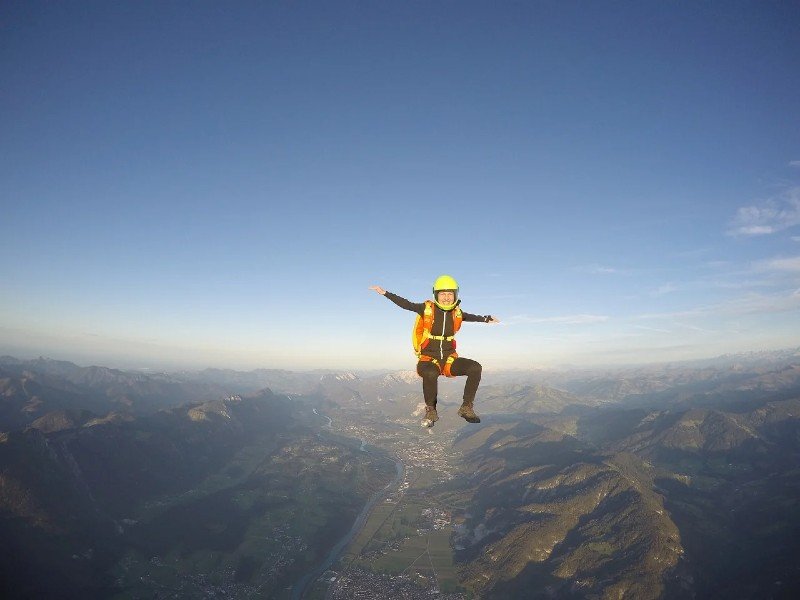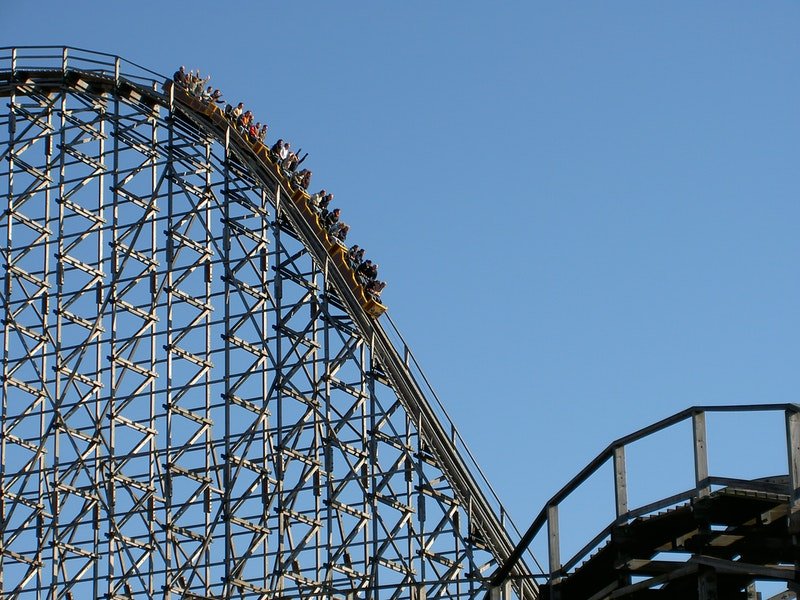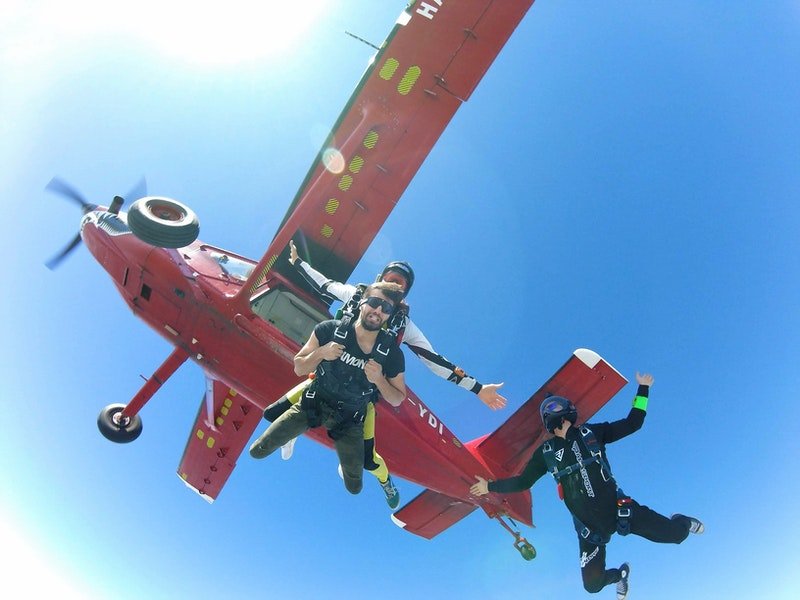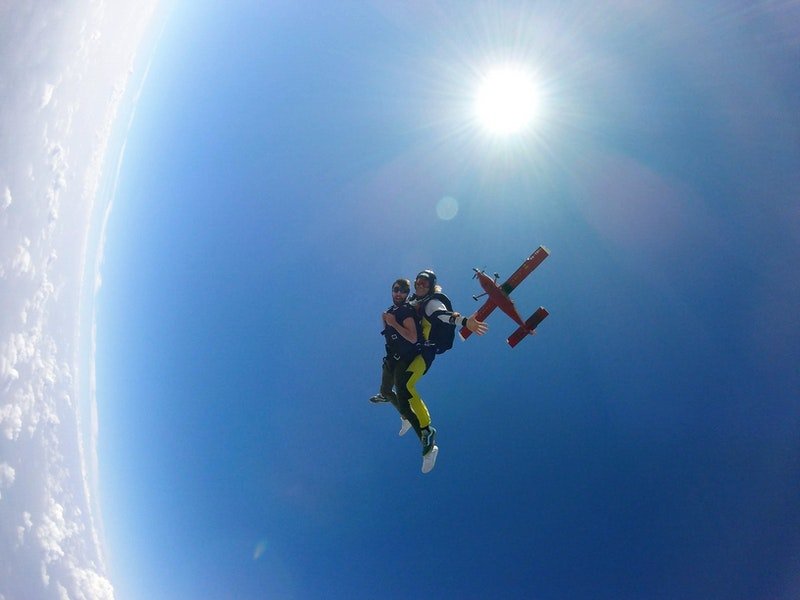In 2018 there were an estimated 3.3 Million skydives, performed by 350,000 people. Skydiving is a sport that so few people get to try, but those who do keep coming back for more. So what is it that makes skydiving so addictive?
Many first-time skydivers do so to mark a special occasion or as a one-off; to celebrate an anniversary, a birthday, or as a charity or team bonding event. And yet, many of these skydivers become instantly hooked and do it again, and again.
What is behind the popularity of skydiving? How are the sensations of freefalling and parachuting? What is it about skydiving that is so addictive?
How is skydiving addicting?

There are several factors that make skydiving so addicting…
People love to be challenged. Facing and overcoming difficult challenges is one of the most rewarding feelings a person can get. The greater the challenge the greater the reward and skydiving is full of challenges. From facing the fear of your first skydive to learning new positions, jumping from greater heights, and freefalling for longer, skydiving will constantly challenge and reward you.
Skydiving is also a very close and friendly community. As a newbie, you’ll instantly be welcomed in and bond with other like-minded learners. As you further your skills and push yourself, you’ll meet a lot of new people. There’s a lot of trust and experience sharing in skydiving. You’ll make a lot of new friends and socialize beyond the jumps. It really is a community like no other.
Then there are the highs. The natural highs and rush of emotions you get when skydiving is something hard to experience elsewhere. From the fear of nearing your jump, to the adrenaline rush when you hit free fall, to the peace and serenity of parachuting to the ground, skydiving offers an array of incredible sensations and emotions.
How does skydiving affect your body?

A lot of people experience nervousness and butterflies when traveling in the plane to the jump zone. It tends to be a mix of excitement and anxiety. And you’ll quickly notice everyone sharing that same tingling feeling. Then as soon as you exit the plane and go into freefall, the adrenaline really hits!
Falling through the air at speeds reaching 120 MPH you’ll feel the air rush past you and your sense heighten. For around 10 seconds you will have a big adrenaline rush, as you gain falling speed, towards terminal velocity. Imagine that brief feeling you get when you pass the crest of a rollercoaster, now imagine that for 10 seconds!
There are some myths that the rush of adrenaline is overwhelming and some people cannot breathe. This is totally untrue, and in fact, most new skydivers scream in pleasure! The biggest feeling of the adrenaline will be an increased heart rate, a huge sense of excitement, and heightened senses.
Once you hit your terminal velocity and have reached your maximum speed it will change. You will start to feel cushioned and caressed by the air and experience a sense of calmness. However, the adrenaline doesn’t totally go, and in some cases, it can last for hours later!
How does adrenaline work when skydiving?

Andrenaline, also known as epinephrine, is a neurotransmitter and hormone produced by our body in moments of danger. This sensation gives us the fight or flight reaction and instantly heightens our senses and abilities. When this happens our heart beats faster, blood flow to the brain and muscles increases, and our air passages open to allow more oxygen.
Our adrenaline glands are just above the kidneys and produce hormones. The adrenaline glands are split into outer and inner glands. The inner gland is where the adrenaline is produced and is controlled by the pituitary gland. This pituitary gland is the master gland that instructs all glands when to release hormones.
So when you jump into freefall your adrenaline gland pumps you with adrenaline to heighten your senses, increase brain and muscle power, and decreases the ability to feel pain. This increases the heightening of the senses, strength, and performance ability. This is what you are feeling when skydiving.
How many tandem skydives do you need to do before a solo skydive?
The minimum number of tandem skydives you need in order to go solo is 0. You don’t need to first take a tandem jump to jump alone, although a lot of people and courses may recommend it. But Tandem jumps are a great way to test yourself and get those sensations and emotions with the added safety of having a licensed professional strapped to your back.
To become a certified skydiver by the USPA you need to complete all your basic training and then have 25 solo jumps. At least 5 of these jumps need to be in a group setting. That will earn you your A license.
How many times can you skydive in a day?

A single skydive can take a lot of time and energy. There are no strict limits on how many skydives you are allowed to do in a day, but after 3-4 skydives on the same day, you might start to feel fatigued. It’s not recommended to keep diving once you feel physically or mentally tired, for obvious safety reasons.
However, it does depends on your experience and physical state. Some licensed skydivers will try to take 10+ skydives in a day. Although it’s worth noting that this would be weather permitting and with the help of professionals packing the parachutes. On a more relaxed day, you could expect a seasoned and fit professional to do around 5-7 jumps in a day.
There are even some world records set for the most skydives in a day. The record for most tandem skydives in 24 hours is set at 105. This was achieved by a pair of U.S. siblings in 2011. However, the record for most solo skydives in 24 hours is set at a whopping 640. This incredible record was made by American skydiver W. L. ‘Jay’ Stokes.

